Let’s crack the code – why should your target audience choose you over your competitors?
Your value proposition makes all the difference in answering this question. While analyzing many value proposition examples in the market, we see companies still probing the peculiar. 65% of B2B businesses invest time and effort in curating their value propositions, yet many aren’t doing it right because the value proposition is less efficient than they think.
A strong business value proposition is a game-changer as it distinguishes your offerings from competitors and communicates the advantages of your products or services.
So, how do you craft clarity in a value proposition? Let’s examine how and how not to build one, using 10 of our favorite value proposition examples for inspiration.
Plus, we’ve got a little bonus at the end to make your life easy.
Table of Contents
First, What are Value Propositions?
In marketing, we say value proposition gets you the right attention in the sea of competitors. It’s just a short statement, but it holds so much power as it concisely communicates your target customers’ unique benefits. It outlines your business’s distinct value, making it crystal clear why customers should opt for you over the competition.
So, is it the same as a tagline? Or a slogan? No, a tagline is an attention-grabbing phrase meant to create brand awareness. It doesn’t highlight unique benefits.
For example, Apple’s tagline is: “Think Different,” and its value proposition is “The best experiences. Only on Apple.” Positioning statement? No, the positioning statement focuses on market placement rather than the inherent value offered to the customer.
We’ve seen Apple’s value proposition, here’s its positioning statement:
“For individuals who want the best personal computer or mobile device, Apple leads the technology industry with the most innovative products. Apple emphasizes technological research and advancement and takes an innovative approach to business best practices – it considers the impact our products and processes have on its customers and the planet.”
Unique selling proposition? No, while related, it’s not the same. USP defines what gives your product or service an edge over competitors. Value propositions define the overall value you offer.
Apple offers unique technology, but its unique selling proposition puts the limelight on lifestyle. Therefore, Apple’s USP is its products make lives easier.
For a value proposition to resonate with your target audience, it must be built on the following foundational pillars.
- Relevance: It should clearly articulate how your product or service addresses a specific need or pain point, improving the customer’s situation or experience.
- Quantifiable benefits: Your value proposition should spell out the tangible benefits customers will receive, using exact words to highlight the unique value.
- Differentiation: It’s essential to communicate why your offering is superior to competitors, focusing on what sets you apart.
You’ll see what we mean in the value proposition examples below. To maximize the impact of your value proposition, display it on your homepage and across all key touchpoints where potential customers might interact with your brand. This ensures that your unique value is front and center at every stage of the customer journey, guiding them toward choosing your product or service.
Before you see some of our favorite value proposition examples, let us tell you what it takes to write a value proposition that’s unique and effective.
How Do You Build a Strong Value Proposition?
Drafting a good value proposition involves a solid grasp of your target customer’s needs. Only then can you showcase how your product or service uniquely addresses those needs.
We have a methodological four-step process to guide you in crafting a value proposition canvas. A value proposition canvas lets you visually present your brand and its offerings in alignment with your target audience’s needs.
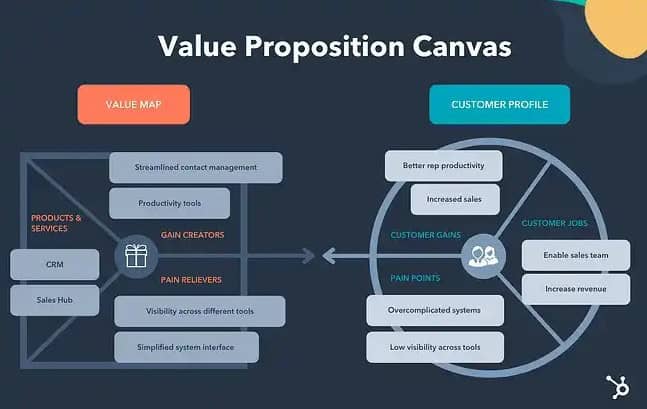
Just follow through and build a value proposition canvas. Then, use a value proposition template to have a concise statement that underscores your business’s unique value.
Identify the primary problem of your target audience
People will buy from a business that makes their lives easier, and how does a business do that? By addressing a specific issue of their customers.
The first step in building a value proposition canvas is pinpointing the core challenges your target customers want to solve. Do this by:
- Engaging with various members of your team—customer service representatives, marketing experts, and sales personnel
- Gathering insights on the problems your target customers aim to address with your product or service
For instance, say your business offers invoicing software on a subscription basis, including automated templates. Your ideal customer’s primary problem can be creating and sending timely invoices without spending big bucks.
This process becomes easier if you have built an ideal customer profile (ICP) for your business. An ICP generally defines user buying behaviors, pain points, challenges, and other information about existing customers.
What benefits does your product or service offer customers?
Now that you know the problem, it’s time to list what you’ve got to offer on your value proposition canvas. This pivotal step involves detailing the advantages each of your offerings provides, focusing on how it fulfills a specific need of your target customer.
Using the invoicing software example, you would enumerate different invoice templates, highlighting their benefits and explaining their necessity for the customer.
Emphasize the value of the benefits of your products or service
Your value proposition can’t stand out unless you state why these benefits are essential for your customers. Create a value map to align your target customer’s problem with your product or service’s benefits.
This alignment in the value map is crucial for refining your value proposition to ensure it effectively differentiates your offerings. If there’s a mismatch, revisit the earlier steps until you identify a solid connection between the customer’s needs and your business’s solutions.
With the invoicing software, the key value might be cost-effective and automated invoicing documentation. This means a significant cost and time saving for your target customers, illustrating the essence of a unique value proposition.
Distinguish your offering as the best solution
Enhance your value proposition by focusing on what makes your offering the preferred choice. This could include exclusive services or additional features your competitors might charge for.
These unique elements can substantially differentiate your value proposition from competitors while maintaining the focus on effectively addressing the buyer’s needs.
Once you’ve built a value proposition canvas, use one of the value prop templates to write a concise value proposition statement. Remember, a well-crafted value proposition is a foundational element of your overall marketing strategy, driving home the unique value and benefits your product or service delivers.
The best way to understand how to use this process is to see it in action, with some great value proposition examples.
Read also: 10 Elevator Pitch Examples to Convince Anyone in 30 Seconds
10 Of Our Favorite Value Proposition Examples To Learn From
Here are some handpicked examples of great value propositions.
1. Subaru: “The most adventurous, most reliable, safest, best Subaru Outback ever.”
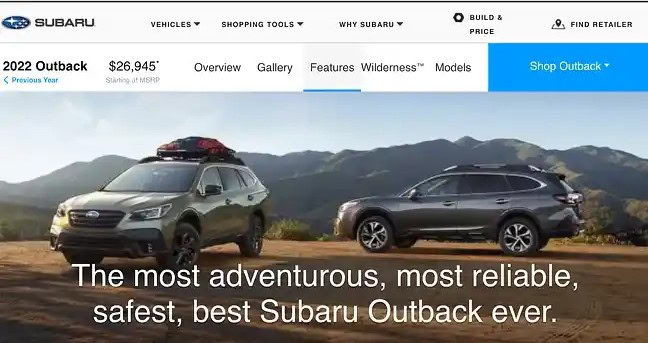
Why do we like it?
Subaru’s value proposition doesn’t just sell a car; it sells an experience—adventure, reliability, and safety wrapped into one.
This value proposition example aims at the heart of the adventurous spirit of its target customers. It assures that with Subaru, you get a car that can handle the thrill of adventure without compromising safety or reliability. It positions the Subaru Outback as the ultimate companion for the daring at heart.
2. Imperfect Foods: “Groceries that help you fight food waste”
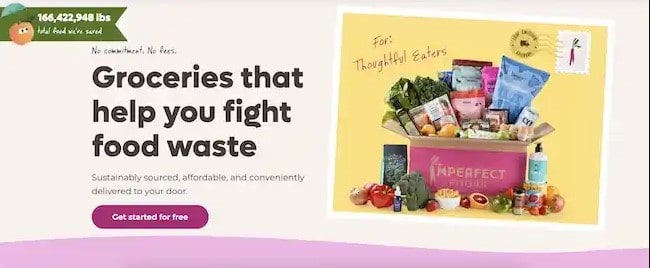
Why do we like it?
Imperfect Foods’ value proposition appeals to the environmentally conscious consumer and the budget-savvy shopper. It takes a stand against food waste by offering groceries that might not look perfect but are perfectly edible.
Imperfect Foods’ value prop highlights the ease and convenience of having sustainably sourced and affordable groceries delivered right to their door. It positions Imperfect Foods as not just a grocery delivery service but a crucial player in a larger movement toward sustainability.
3. Uber: “Tap the app, get a ride”
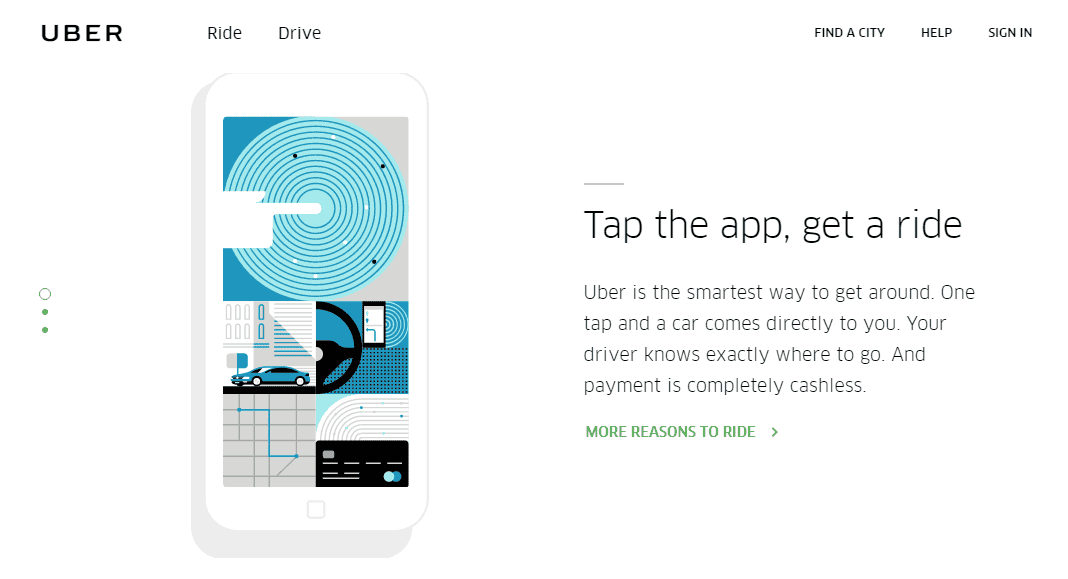
Why do we like it?
Uber masterfully outlines the inconveniences of traditional taxi services and showcases how its platform is a game-changer. With a simple tap, Uber removes the friction from hailing a cab—no more calls to dispatchers, explaining directions under stress, or worrying about cash payments.
Uber’s value proposition is built around simplicity, convenience, and a seamless experience. It directly addresses the pain points of its target audience and offers a compelling solution that makes it the preferred choice for urban mobility.
4. Apple iPhone: “Why there’s nothing quite like iPhone.”
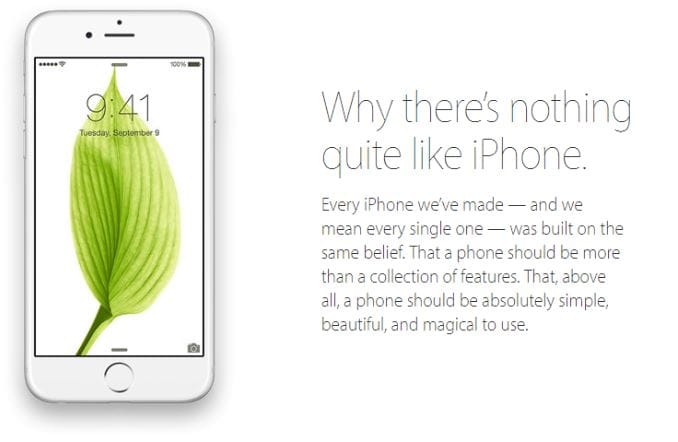
Why do we like it?
How can we leave Apple out of our favorite value proposition examples? Apple doesn’t sell the iPhone purely on its features; it sells an experience, an ethos.
The iPhone’s value proposition is rooted in the belief that a phone should be more than its specs—it should be aesthetic and easy to use.
This approach speaks to consumers looking for technology that integrates seamlessly into their lives. It sets the iPhone apart in a crowded market by showing it as a product with a unique blend of functionality and aesthetic appeal.
5. Lyft: “Set your own hours. Earn on your own terms.”
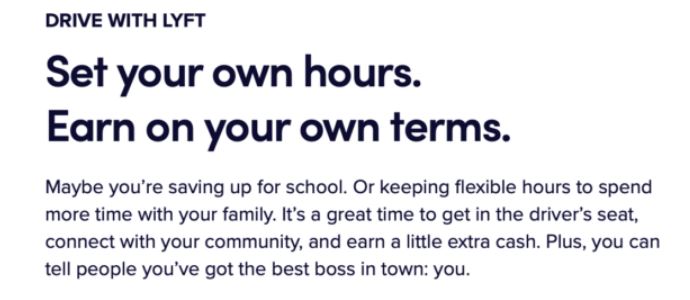
Why do we like it?
Lyft’s value proposition is centered around flexibility and empowerment. By allowing drivers to set their own hours and earn on their terms, Lyft positions itself as an opportunity for individuals to take control of their work-life balance.
This resonates with target customers who value autonomy, whether working towards personal savings goals or seeking a flexible work schedule.
6. Grammarly: “Great writing, Simplified”

Why do we like it?
Grammarly addresses a universal need for effective communication. Grammarly’s value proposition offers efficiency in writing by highlighting the AI-powered writing assistant’s ability to produce bold, clear, mistake-free writing.
This proposition appeals to professionals, students, and anyone looking to improve their writing skills. It offers a simple solution that supports their goal of making a great impression through their writing without much effort.
7. Stripe: “Financial infrastructure for the Internet”

Why do we like it?
Stripe presents itself as the essential infrastructure for online businesses, simplifying financial transactions and processes. This value proposition speaks directly to entrepreneurs, small businesses, and large companies. It promises a solution that grows revenue and handles complex financial tasks with ease.
By focusing on the benefits of its platform, Stripe distinguishes itself in a competitive market as the go-to service for businesses looking to thrive in the digital economy.
8. Evernote: “Tame your work, organize your life”
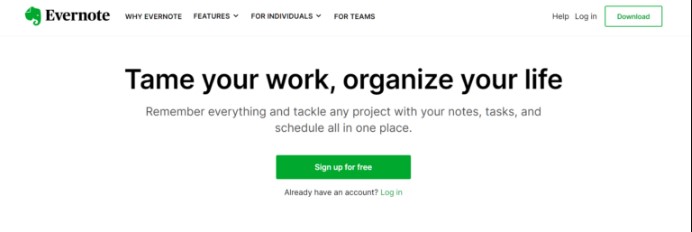
Why do we like it?
Evernote tackles the challenge of managing information overload at work and in life. Its value proposition emphasizes the ability to remember everything, organize tasks, and keep schedules in one place. It appeals to the busy professional, the multitasking parent, or the overwhelmed student.
Evernote positions itself as the best of all the tools for productivity, promising users a more organized, stress-free life.
9. Zoom: “Meet face-to-face from any device”

Why do we like it?
Since the pandemic made remote working situations common, connectivity has been paramount. Zoom’s value proposition offers a perfect solution: A platform that makes face-to-face meetings possible from anywhere, on any device.
Zoom targets professionals and organizations with the promise of reliable video conferencing that fosters collaboration and productivity. Zoom’s simple yet powerful promise to connect people easily and reliably addresses the core need for effective communication in personal and professional contexts.
10. EngageBay: “Market better. Sell faster. Support smarter”
Why do we like it?
EngageBay targets small businesses seeking a comprehensive solution. Their problems include streamlining operations and enhancing customer engagement to accelerate growth.
As a solution, EngageBay offers a platform unifying marketing, sales, and support. By promising a platform that covers all bases, EngageBay positions itself as the smart choice for businesses aiming to market better, sell faster, and support smarter.
For each example, analyze why it’s effective and how it communicates the business’s unique value to its target audience.
Read also: Tips & Examples to Help You Build a Stellar Creative Strategy
A Mediocre Value Proposition Example (What Not To Do)
With the value proposition examples above, you now know what your value prop should look like. But we think you should also know what it shouldn’t look like.
Cloudflare
Before:
Cloudflare’s old value proposition fails because:
- The lack of specificity – what problem does it address?
- The subheading attempts to add some context, indicating trust and a more secure user experience. However, this critical information gets lost under the ambiguous main headline.
- The accompanying image is nondescript and feels disconnected from the unique value proposition that Cloudflare aims to provide.
Later:
Cloudflare’s revised headline, “Discover the connectivity cloud,” makes a stride towards a clearer value proposition but still misses the mark because:
- It still doesn’t immediately convey the direct benefits to the user.
- The subheading does a better job of honing in on what users can expect: control, security, and speed for their apps and data across various environments.
- The custom graphic aids in visualizing the concept of a ‘connectivity cloud,’ but the text placement around the image could detract from the message’s impact.
Your value proposition is part of your marketing campaigns and the heartbeat of your business’s identity. It serves as a compass for your target audience and marketing strategies. Every element, from the value proposition templates to the chosen visual elements on your website, should reflect the promise and value your business delivers.
Read also: Understanding the 4 Key Steps to Brand Development
Questions To Help Add Your Value Proposition To Your Marketing
You’ve seen good and bad value proposition examples and are ready to create your own value proposition. But when shaping the value proposition for your business, it’s essential to consider a series of reflective questions. To help you out, we’ve listed (and answered) them here.
Who exactly is your target audience?
Understanding the customer segment you’re addressing lets you craft a value proposition that resonates personally. It helps you address the target market’s challenges and desires within a single effective statement.
2) What is the purpose of your brand?
Reflect on the purpose your brand serves, which should be at the core of your value proposition template. A strong mission statement not only illustrates your brand’s commitment to your target customers but can also serve as a key differentiator in a crowded market.
3) What benefits does your business offer to customers?
Construct a comprehensive list showcasing how your product or service meets customer needs and the features that enable these benefits. This understanding is critical for an effective value proposition statement that captures potential customers’ attention.
4) What emotional value does it deliver?
Investigate the emotional response your product or service elicits in customers. Beyond the practical benefits, an effective value proposition often taps into the emotional payoff that your target customers seek. If your software saves time on research, the emotional value may lie in the peace of mind and confidence it provides to your target customer.
5) What unique value does your business provide?
Pin down what sets your offerings apart. An effective value proposition canvas will highlight your unique selling points without explicitly comparing them to others but rather focusing on the unique benefits your company offers.
6) What action do you want your target customers to take upon encountering your value proposition?
The best value propositions are paired with a strong call to action that entices potential customers to engage, converting interest into decisive action.
Remember, integrating your value proposition into your business should not be an afterthought but a defining element of your marketing strategies and brand identity. Once you’ve amassed the information from the above questions, refine it into a compelling value proposition statement.
This statement should be a clear, concise representation of your brand’s benefits, unique value, and the promise you make to your target audience. It will ultimately help you attract customers and grow your business.
Ensure that your value proposition communicates effectively across various platforms, whether it’s a customer-facing webpage or behind-the-scenes customer service training.
Read also: SaaS Go-To-Market Strategy Framework & Proven Examples
Tips To Create Unbeatable Value Propositions
- Dive deep into competitor analysis: Dissect your competitors’ value propositions and understand what others offer. It will allow you to carve out a unique space for your business by highlighting your competitive advantage and unique value in the market.
- Articulate the value clearly: When describing your offerings, focus on clarity and simplicity. A great value proposition communicates the benefits and value of your product or service in a way that’s immediately understandable to your target customers. This involves using precise language reflecting the benefits and unique selling propositions your business offers.
- Put your ideal customers’ gains on display: Spell out the specific benefits and gains your target customers will experience by choosing you over your competitors. This could include premium features, cost savings, improved efficiency, or enhanced customer feel. The aim is to craft a proposition statement that vividly depicts the desired outcome and improved customer’s life post-purchase.
- Tailor propositions to each buyer persona: Acknowledge that one size does not fit all by creating a unique value proposition for each buyer persona. Your message will resonate when you address the specific pain points, customer jobs, and desired outcomes relevant to each segment of your target market.
- Test on multiple marketing channels: Test your value proposition across different marketing channels and platforms, such as social media accounts, email campaigns, focus groups, and direct feedback mechanisms. Gauge the reaction of your target audience and refine your proposition to effectively communicate the value and benefits of your product or service.
- Continuously improve with feedback: Feedback from your target customers and prospects is a valuable tool for continually refining your value proposition. The iterative process helps keep pace with changing customer needs and market dynamics. It is key to maintaining a value proposition that stays relevant and compelling.
- Visualize your value proposition: Don’t underestimate the power of visual elements in reinforcing your value proposition. Use the value proposition canvas to visualize how your products or services alleviate customer pains and create gains, making your value proposition even more tangible and relatable to your target audience.
- Use value proposition templates: With a clear understanding of the initial steps we discussed above, you can use value proposition templates for more efficiency. Below, we’ve given you five customizable value proposition templates ready to use.
Read also: 12 Sales Scripts to Reshape The Future of Your Business
Special Bonus: Five Value Proposition Templates For You
Here are five value proposition templates for you. Feel free to copy and customize them as you like.
1. The benefit-oriented value proposition template (Classic)
“Designed for [target audience] with [specific need or problem], our [service/product] delivers [key benefit], embodying the best in [product/service category].”
Example: “Designed for on-the-go parents who need quick meal solutions, our kitchen gadget delivers healthy, homemade food in minutes, embodying the best modern culinary devices.”
Why use it?
A simple value proposition that is direct and quickly informs your target audience of your product or service’s benefits without over-complicating the message.
Who can use it?
Industries with products that have a set of distinct, tangible benefits that can be clearly communicated, such as:
- Consumer electronics
- Productivity software
- Health and fitness services
- Household appliances
- Automotives
2. The outcome-based value proposition template
“Our [product/service] empowers [target audience] to realize [desired outcome] by providing [distinctive method or feature].”
Example: “Our online learning platform empowers busy professionals to master new skills by providing personalized learning paths and real-world projects.”
Why use it?
Emphasizes the end result or transformation that the customer will experience and promises a journey from need to fulfillment. It speaks directly to the target audience’s aspirations.
Who can use it?
Industries where the business’s value is measured by its ability to deliver clear, outcome-driven results, such as:
- Education
- Professional training
- Fitness gyms
- Health programs
3) Value proposition template to emotionally appeal to your target audience
“Immerse yourself in [emotive benefit] when you engage with our [product/service], crafted especially for [target audience].”
Example: “Immerse yourself in serenity when you engage with our spa treatments, crafted especially for those seeking respite from the bustle of city life.”
Why use it?
Evokes an emotional response that resonates with the target audience’s deeper motivations and desires. It helps transcend conventional benefits and features, creating loyalty and a lasting impression.
Who can use it?
Industries where customers are looking for a transformational journey towards a better self, such as:
- Beauty and wellness
- Travel and hospitality
- Entertainment
4. The exclusivity value proposition template
“Step into the exclusive realm of [target audience] experiencing [exclusive feature or benefit], reserved through our [product/service].”
Example: “Step into the exclusive realm of discerning homeowners experiencing personalized smart home integration, reserved through our bespoke technology solutions.”
Why use it?
Creates a sense of urgency and desire among potential customers by framing the product or service as something not just anyone can have. It conveys a status symbol that can be an incredibly effective marketing strategy.
Who can use it?
Industries where customers are not just making purchases but are making statements about their identity and status, such as:
- Luxury goods
- Lifestyle products
- Premium services
- Real estate
5. Convenience-driven value proposition template
“Transform [task or goal] into a seamless experience for [target audience] with our [specific feature or benefit].”
Example: “Transform meal prep into a seamless experience for busy families with our ready-to-cook gourmet meal kits.”
Why use it?
Focuses on ease and efficiency, two qualities highly prized in today’s fast-paced world. This template positions the product or service as a simple solution that streamlines complex or time-consuming tasks.
Who can use it?
Industries where customers make purchase decisions based on convenience, such as:
- Consumer goods
- eCommerce platforms
- On-demand services
Methods For Creating Your Own Value Proposition Template
Do you feel like these templates don’t fit your needs? You can create your own value proposition templates for ideation using the following methods.
Steve Blank Method
“We help (A) do (X) by doing (Y).”
Steve Blank’s method simplifies the statement and highlights the advantages obtained from the characteristics rather than concentrating on the features themselves.
Adhering to this formula will establish a connection between your target market, their problems, and the solution.
Geoff Moore Method
“For [target customer] who [needs or wants X], our [product/service] is [category of industry] that [benefits].”
Geoff Moore’s template precisely identifies industry categories and highlights the benefits that customers value. This presents a more concise formula for the value proposition.
Harvard Business School Method
Answer the following questions as you build your value prop statement:
- “What is my brand offering?”
- “What job does the customer hire my brand to do?”
- “What companies and products compete with my brand to do this job for the customer?”
- “What sets my brand apart from competitors?”
Read also: 7 Tips to Convert Prospective Clients Into Paying Customers
Conclusion
And there we have it, our expedition through the world of value propositions concludes. Regardless of your sector’s landscape—be it as varied as retail or as homogenized as dairy—a distinct value proposition will be your key to positioning your brand as your audience’s ultimate choice.
Lean on the strategies, insights, templates, and real-world value proposition examples shared here to write a value proposition that sets you apart from your competitors.
FAQ
What is a value proposition template?
A value proposition template is a structured format used to articulate the unique value a product or service offers to its target audience, helping businesses communicate their core benefits clearly.
What are examples of value propositions?
Here are 10 great value proposition examples:
- Subaru: “The most adventurous, most reliable, safest, best Subaru Outback ever.”
- Uber: “Tap the app, get a ride”
- Imperfect Foods: “Groceries that help you fight food waste”
- Grammarly: “Great writing, simplified”
- Apple iPhone: “Why there’s nothing quite like iPhone.”
- Lyft: “Set your own hours. Earn on your own terms.”
- Stripe: “Financial infrastructure for the Internet”
- Evernote: “Tame your work, organize your life”
- Zoom: “Meet face-to-face from any device”
- EngageBay: “Market better. Sell faster. Support smarter”
What is Apple’s value proposition?
Apple’s value proposition is “The best experiences. Only on Apple.” It doesn’t simply sell devices like other brands but differentiates itself as a seller of transformative experiences through its products.

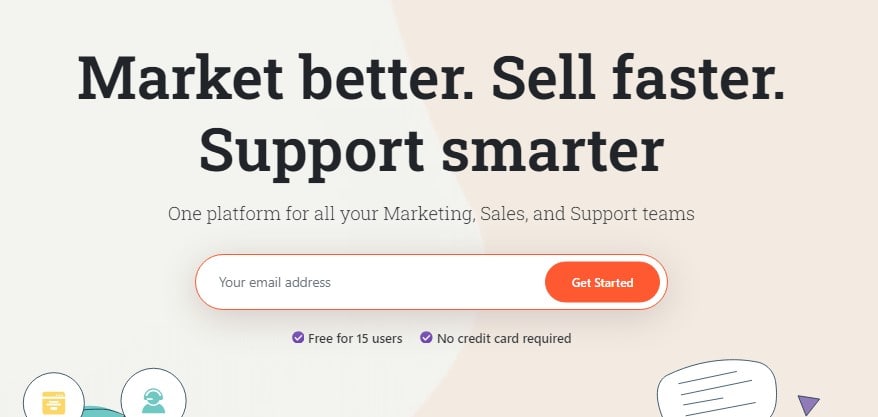
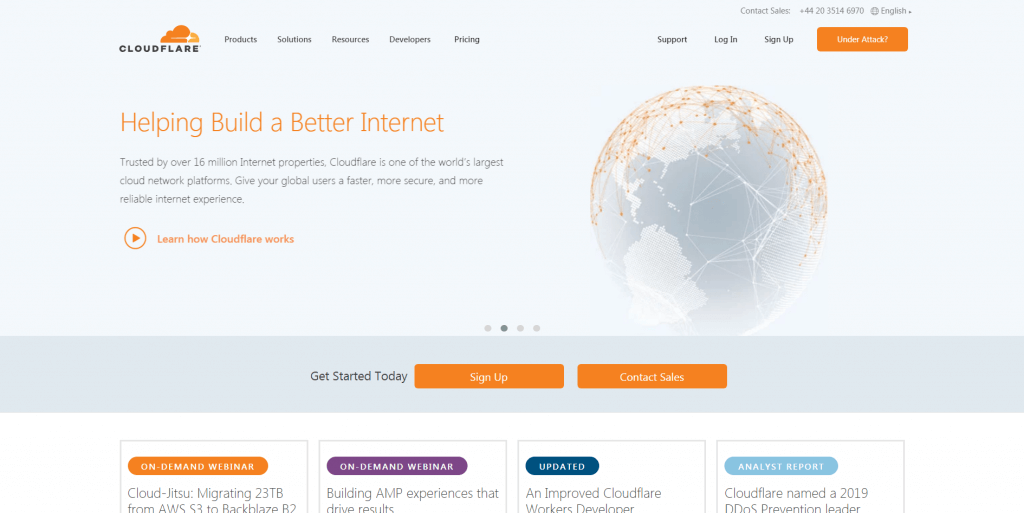
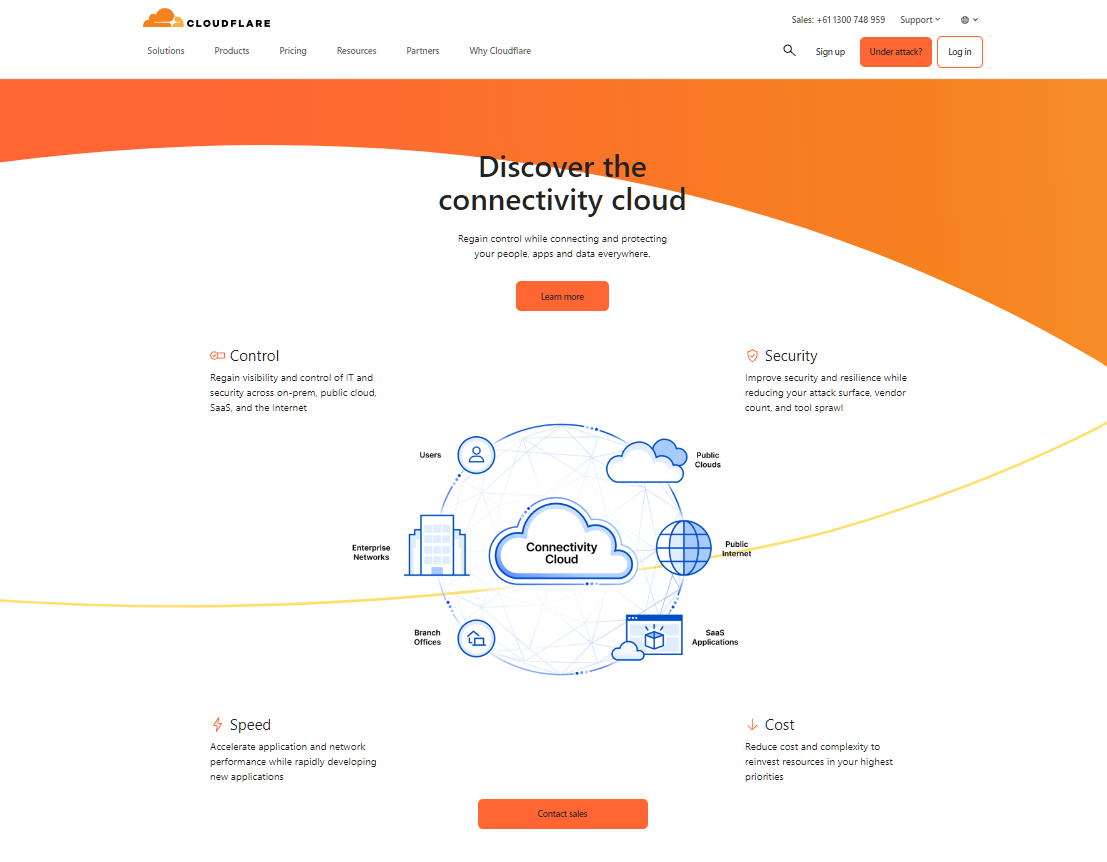
Interesting read! The security of smart home devices from potential hacking threats is definitely a concern.
Exemplary analysis of value propositions. This comprehensive guide offers invaluable insights for businesses aiming to enhance their market positioning and customer engagement strategies.